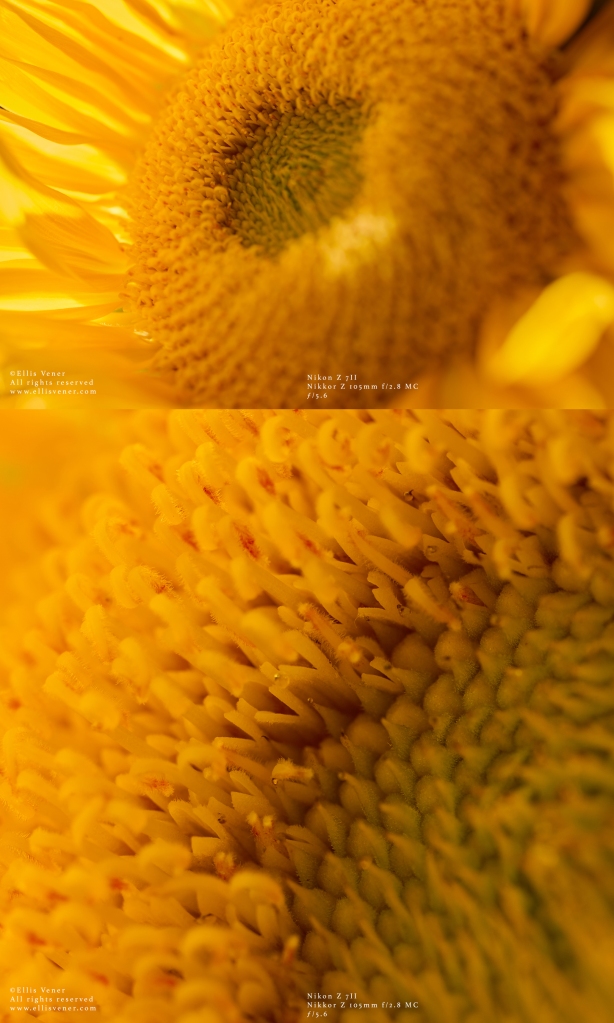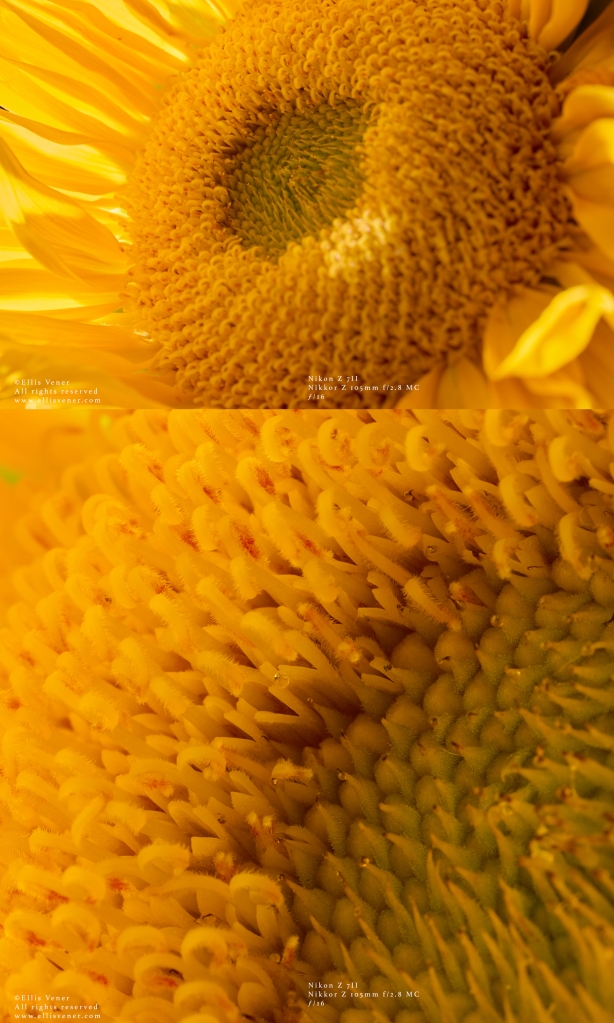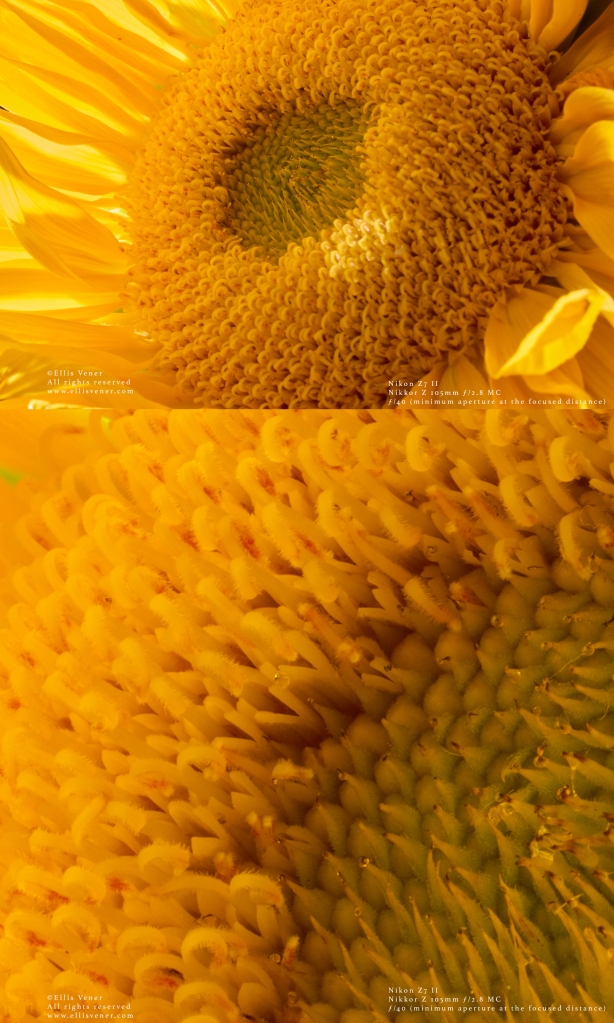©Ellis Vener|
08 Aug 2021
Shortly after taking delivery of the new Nikkor Z 105mm f/2.8 MC lens, I made this series of photographs to test its diffraction and bokeh characteristics using the 45mp Nikon Z 7II camera in a real-world situation.
After manually focusing the lens, I locked focus and made a series of exposures. All exposures were made in aperture priority with the camera set to ISO 64. The camera was mounted on a ProMediaGear TR344L tripod with a Really Right Stuff BH-55 tripod head.
The 14-bit losslessly compressed NEFs were processed in Capture One Pro 21, and the composite full-frame + full resolution cropped images were created in Adobe Photoshop CC 2021. The cropped views are roughly centered on the part of the flower I focused on.
At normal focusing distances, the f-stop scale runs from f/2.8 to f/32 but with macro capable lenses at very short camera to subject distances, the maximum effective f-stop gets smaller (at the distance I focused for in this series, the maximum effective f-stop decreased (from f/2.8 to f/3.3) as does the minimum effective f-stop (f/32 to f/40.)
The f/stop readings are from the camera settings EXIF data.
I was pleasantly surprised to see how sharp the lens could render detail down to the effective aperture of ƒ/32, but even at a moderate print size like 10×15, f/40 remains usable. Usually, lens resolution really starts to fall apart by f/16 or f/22, even with other high-quality macro lenses I have used.
Bokeh, the the transliteration of the Japanese language term for how a lens renders out of focus areas, remains smooth all the way down to ƒ/32 but starts to get a just little choppy at minimum aperture. But what if you want even greater depth of field? You need to use a computational photography technique called “focus stacking.” I will cover that in the next post.










